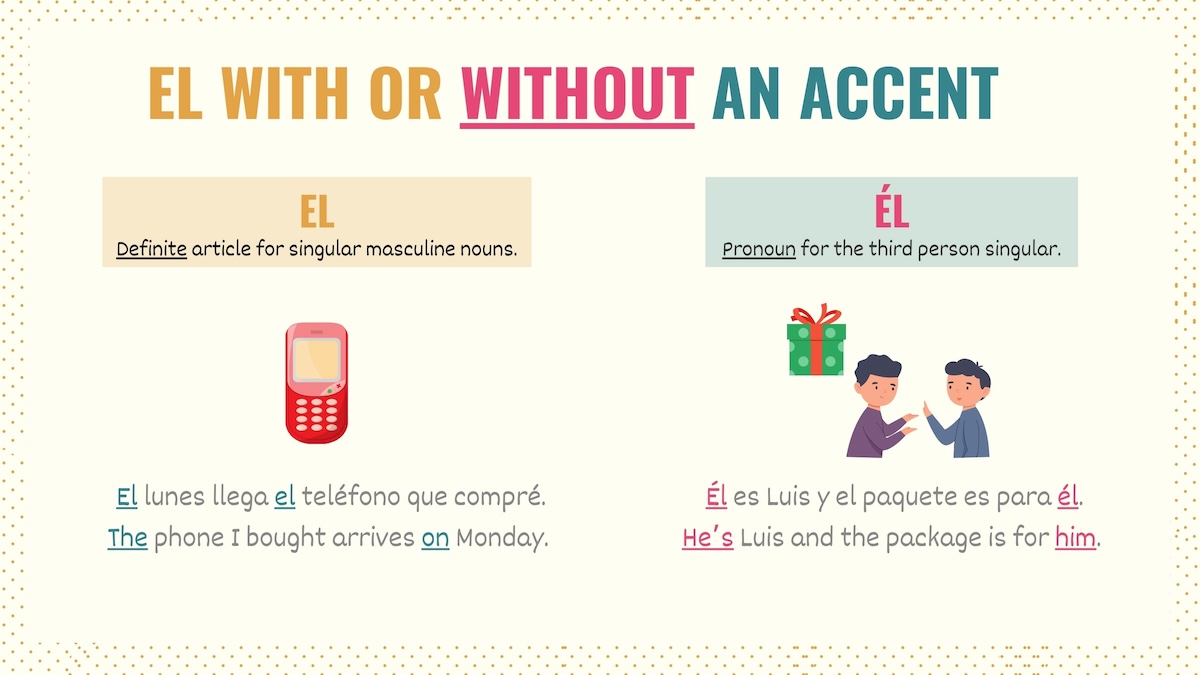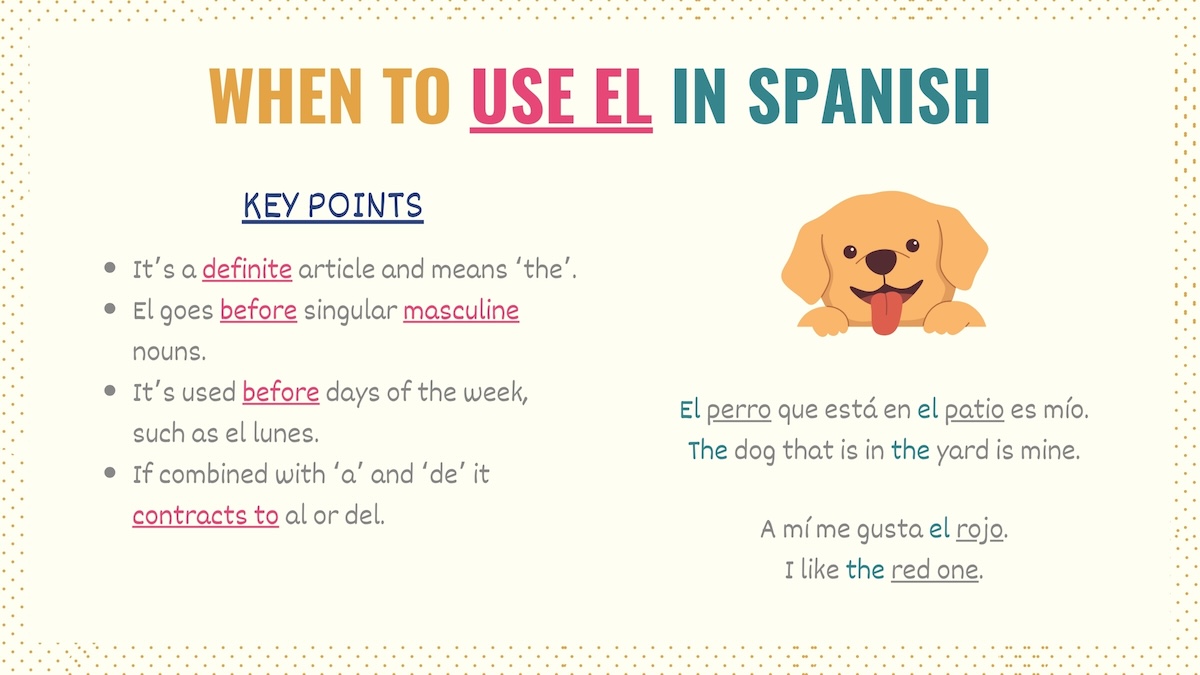El vs él are two different words. El without an accent is a definite article (the) and more often it’s placed before concrete singular masculine nouns. Él with an accent is a pronoun for the 3rd person singular: it replaces a male subject or object. Depending on the sentence, él means ‘he’ or ‘him’.
El teléfono azul es de él.
The blue phone is for him.
El hospital está a dos cuadras.
The hospital is two blocks away.
Él es el papá de ese niño.
He is that boy’s father.

El vs él are terms with specific roles and, as such, they work with different elements and constructions. Since they’re both crucial, in the following sections, you’ll learn their differences by learning when and how to use each term.
El vs Él: Key Points
El vs él is a set of crucial words that you must master. Here are the primary aspects you need to remember:
- The meaning of el vs él changes based on the presence or absence of the accent mark.
- El without an accent is a definite article (the) and conveys specificity.
- It’s placed before singular masculine nouns –el perro, el niño, el camión.
- El + adjective/adverb identifies and describes a noun that’s been omitted –el rojo.
- Él with an accent is a pronoun and, as such, it replaces a noun from the sentence.
- Depending on its role in the sentence, it can be a subject or a prepositional pronoun.
How & When to Use El in Spanish
In Spanish, el without an accent is a definite article. It’s placed before singular masculine nouns to indicate that such a thing, person, place, or concept is specific.
For example:
El niño está buscando a su perro.
The boy is looking for his dog.
El perro que está en el patio es mío.
The dog that is in the yard is mine.
Voy a ver a Mateo el mes que viene.
I’m going to see Mateo next month.
El banco está al lado del teatro.
The bank is next to the theater.
As you can see in the last examples, when combined with the prepositions ‘a’ and ‘de’, el is part of the Spanish contractions al and del.
Since days of the week in Spanish are masculine, they’re preceded by el when using these words as time expressions:
Donna llega el miércoles.
Donna arrives on Wednesday.
El viernes tengo una cita con el doctor.
On Friday I have an appointment with the doctor.
¿Puedes el lunes? Si no, estoy libre los martes.
Can you do it on Monday? If not, I’m free on Tuesdays.
Take Note: Both el and la mean ‘the’, but in Spanish, they’re applied depending on the noun’s gender. El works with masculine nouns, whereas la is used for feminine nouns.
When the context is clear and the noun can be omitted, el can be combined with adverbs and adjectives that help you identify and describe the noun.
A mí me gusta el rojo.
I like the red one.
Voy a comprar el más barato.
I’m going to buy the cheapest one.

Watch the El vs Él Video Lesson
When Should You Use Él
Él with an accent is a Spanish pronoun, meaning that it replaces a noun in a sentence. Depending on what it replaces and elements it works with, él can be a subject or prepositional pronoun.
As a subject pronoun, él substitutes a male subject: the person or thing that performs the action or is in a certain state.
Él está bien. Se mudó a Japón.
He is fine. He moved to Japan.
Juan no va a venir. Él me dijo.
Juan is not coming. He told me.
Natalie preparó la cena y él el postre.
Natalie cooked dinner and he prepared dessert.
When placed after a preposition, él is considered a prepositional pronoun:
El juguete es de él.
The toy is his.
A él no le gustan los perros.
He doesn’t like dogs.
Las galletas no son para ti, son para él.
The cookies are not for you, they’re for him.
Note that, unlike el, él with an accent doesn’t contract when combined with ‘a’ and ‘de’. Also be aware that its translation may vary depending on the structures used.
Take Note: For the most part, Spanish prepositional pronouns are like subject pronouns. But there are some exceptions that you need to keep in mind.




